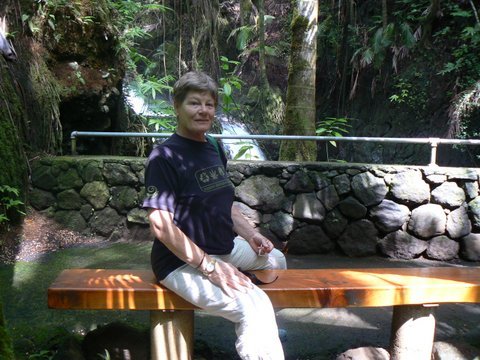HILO — Crippling stress, extreme pain and bad arthritis — for 72-year-old Subhadra Corcoran, cannabis is essentially the only fix. ADVERTISING HILO — Crippling stress, extreme pain and bad arthritis — for 72-year-old Subhadra Corcoran, cannabis is essentially the only
HILO — Crippling stress, extreme pain and bad arthritis — for 72-year-old Subhadra Corcoran, cannabis is essentially the only fix.
The Kona resident has used the drug medicinally for decades. For the past 10 years, she’s been a patient in Hawaii’s medical marijuana program.
But later this year, when the state’s first dispensaries can legally begin operating, Corcoran isn’t planning to use them.
“I can’t afford to buy pot,” said Corcoran, who said she currently gets weed through a caregiver on the island. “I’m 72-years-old, disabled and living off Social Security … if they had $10 (for an eighth of an ounce of marijuana), I would. If they would make it affordable and my insurance would cover, of course I would. But that’s not going to happen.”
Medical marijuana has been legal in Hawaii since 2000, but the state’s never established a way for patients to purchase it. Proponents of the up-and-coming dispensary system hope the medical pot shops will, for the first time, create a way to do that.
But statewide only 16 dispensaries can open initially. Meanwhile, the number of registered patients in Hawaii surpassed 13,620 at the end of March, data shows, and continues to grow each month. More than half of those patients resided in Hawaii County, more than any other island including Oahu, and yet four dispensaries can open on the Big Island initially.
Marijuana also remains a Schedule 1 controlled substance not covered by insurance companies.
Some in the industry worry — based on what other states have experienced after launching dispensary programs — that high demand coupled with a capped number of dispensaries will lead to prices few can actually afford.
In New York, which approved up to 20 dispensaries through its newly established medical marijuana program in 2014, less than half of the state’s more than 2,000 patients had actually obtained the drug about three months after it began in early January, according to information from New York’s Department of Health.
Last year in Minnesota, two months after the state launched its medical cannabis program, about one-fifth of roughly 500 registered patients had not returned to buy more medication, state data showed.
“Excessive pricing, (excessive) taxation and (excessive) legislation all lend to feeding the black market,” said Don McKay, owner of a Colorado Springs, Colo.-based dispensary.
In Colorado, the exact opposite has happened, said McKay, who employs 10 people at his “Southern Colorado Medical Marijuana.” Colorado has allowed dispensaries since 2010 and currently licenses more than 900 statewide — both medical and recreational. McKay said there are about 126 dispensaries in his vicinity, which serve at least 10,000 patients.
As a result, marijuana prices in Colorado have plummeted. When McKay opened about six years ago, he sold medical pot for around $400 an ounce. These days, the business “regularly has sales for $99 or $125 an ounce,” he said.
“The value of the product has dropped (well below) it’s original value,” he said. “It’s a supply-and-demand thing. Excessive stores will tend to drive prices down, which is ultimately good for customers.”
Hawaii lawmakers are mulling bills this legislative session that aim help keep prices at bay. For example, Puna Democrat Sen. Russell Ruderman introduced a measure that would allow medical marijuana production centers licensed after October 2017 to include secured greenhouses or shade houses. The Senate Bill, which has since cleared two House readings, would allow dispensaries to grow marijuana using natural sunlight. Artificial grow lamps would further drive up costs in Hawaii, which has the highest electricity prices in the nation.
Another omnibus House bill moving through the Senate would allow advanced practice registered nurses to authorize patients to use medical marijuana. Supporters say that would make the process easier to access, thus encouraging more people to register for the program.
“Only about 2 percent of physicians (statewide) are participating (in the medical marijuana program) at this time,” said Kona-based physician Charlie Webb, who sees at least 10 cannabis patients per week. “Obviously, the large majority did not. That’s why it’s sort of turned into a specialty.”
The state DOH planned to announce dispensary licensee selections on Friday, but last week, officials said the announcement could be delayed because of an issue with fingerprinting and background check requirements. Once selected, licensees can technically start operating July 15.
Email Kirsten Johnson at kjohnson@hawaiitribune-herald.com.





